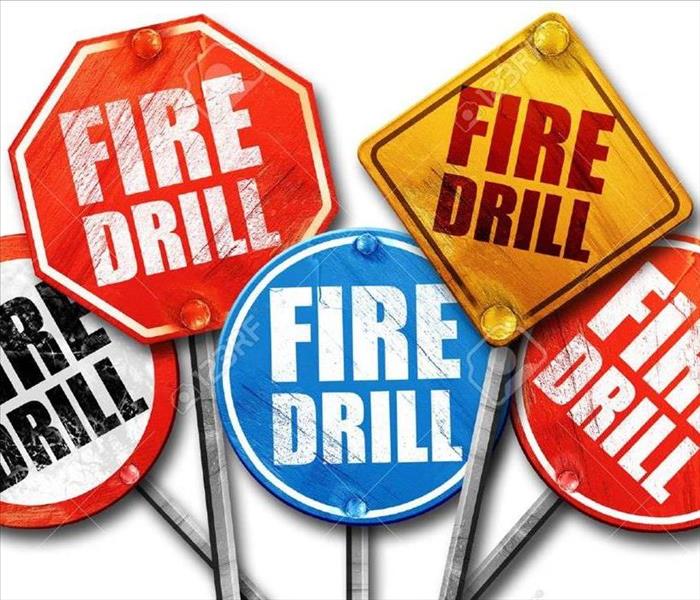Fire Drill
1/11/2021 (Permalink)
When owning or managing a business, an important safety precaution in your company is to do regular fire drills. Not only will regular drills teach new employees what to do, but it will help keep everyone informed of any changes, and to keep the proper steps in mind. With fire drills, repetition is key. By making it a habit, everyone will be be able to perform the drill without even thinking of it. They say it is good to remember the “Seven P’s” (Proper prior planning and preparation prevents poor performance). If you never have done a fire drill, or led a fire drill, here are a few steps on what to do.
Develop a detailed fire evacuation plan
You want to come up with various scenarios, considering where a fire might start in your business. Are there areas of the building at a higher risk for fire? Also, are you located in an area where a wildfire may threaten your business?
Key points in a commercial fire plan:
- Establish roles and responsibilities for the fire evacuation team
- Create a communication plan
- Plan and map out routes
- Know your tools such as fire detectors, fire alarms and fire extinguishers
- Rehearse fire drills at least twice per year
- Make sure to follow-up and report using a modern employee notification system so you can determine the safety of all employees
Setting goals
You will want to set standards and goals for the fire drill. If you include these things on your first drill, you can see about making improvement on subsequent drills. Some of the metrics that should be considered:
- Time to evacuate
- Time to report completion of the drill
- Successful shutdown of critical equipment, if applicable
Rehearse the fire drill
Doing rehearsal drills will reduce the complexity of the full drill. This should start with just the team leaders participating in the rehearsal, either in-person, or in the form of a table-top exercise. By starting this way, you can identify weaknesses in the plan, and be prepared for any confusion and questions. Once the rehearsals have corrected any problems, you should do a full rehearsal with as many employees as possible. The key to a successful fire drill is communication. Effective communication with your employees during the drill can prevent confusion.
Once you and your employees are proficient in the primary fire drill, start working on other scenarios. You want to consider fires in different locations, exits that are not working, and different possible disasters that require evacuation, so you can be prepared for anything.
Appoint observers
When you conduct a fire drill at work, you should choose a few people that are not on your team to be observers. Your observers should be looking for the following:
- Large groups moving slowly or talking with each other
- People on cell phones or using other mobile devices
- Unhelpful behavior such as grabbing coats, purses, and bags
- Difficulties for people with disabilities such as hard-to-open doors or slippery stairs
- Employees who choose a different exit rather than the one closest to their work station
Once the fire drill is all done, you and your team should sit down and do an AAR (After Action Review). Some good points to discuss:
- Did employees close the doors upon exiting rooms?
- Were employees calm and confident?
- Did everyone meet at their assigned meeting spot?
- Was the fire alarm reset and the alarm company notified of the drill (if applicable)?
- Did the building facilities, i.e. doors, alarms, automated voice commands work correctly?




 24/7 Emergency Service
24/7 Emergency Service
